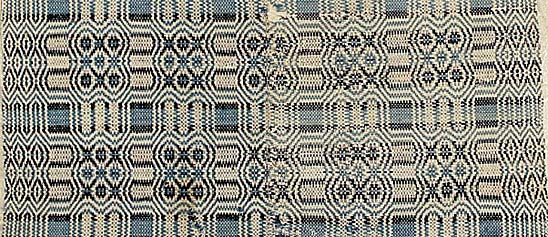Men's fashion went through a revolutionary change during the last half of the eighteenth century, as clothing steadily shrank from a curvaceous, full-skirted style into a slender, vertical silhouette.
- Description
-
Men's fashion went through a revolutionary change during the last half of the eighteenth century, as clothing steadily shrank from a curvaceous, full-skirted style into a slender, vertical silhouette. The waistcoat was a vest-like garment that a man wore, along with his breeches, over his shirt and under his suit coat. This particular waistcoat dates from the second quarter of the century and represents men’s clothing before it had begun to evolve.
-
The unidentified gentleman from Maine who wore this garment sometime around 1740 would have probably purchased it as a flat textile for his tailor to cut and fit to his measurements. When it was finished, he must have presented an impressive figure. His waistcoat, with its squared fronts and full skirts, would have draped over his torso and swirled around his upper thighs. Wide pocket flaps protruded over his hips, held out by three otherwise useless buttons beneath them. Moreover, the pattern of the silk fabric made his waistcoat appear even more massive. The design, which was woven just for this purpose, featured a huge floral pattern around the edges of the skirts and fronts that accentuated the expansive scale of the garment.
-
This waistcoat of brown tone-on-tone warp-patterned silk brocade is woven to form, with a diaper pattern–a small diagonal grid–that covers the ground and a large-scale serpentine leaf and flower design along the straight front base and center front edges. Both pocket flaps are also woven to form, and their lower edges are cut in mirror-imaged S-curves; they are sewn at either side of the center front on each hip. Although the pocket flaps have three decorative vertical buttonholes, the holes were never cut. Three non-functional buttons are sewn under each pocket flap.
-
Fifteen buttons are sewn along the right center front. Fifteen buttonholes are worked along the left center front, but the lowest four were never cut open and thus can not be buttoned. The upper eleven buttons are domed, with a brown silk diamond embroidered in four sections, surrounded by a small diapered ground. The lower four buttons, and the buttons under the pocket flaps, are mostly flat and covered with brown basket-weave silk.
-
The back skirts of the waistcoat are of the primary fabric, but the upper back is of plain-weave brown silk. The fronts and back skirt are lined with brown silk twill, and the upper back is lined with napped off-white cotton and linen fustian. The waistcoat is open down the center back from the shoulders to the hem. Three pairs of cotton tape ties originally spanned the slit, but they are now missing. The skirt is vented at the sides from waist to hem. The overall length of the front, measured from the shoulder seam to hem, is 36 in. (91.4 cm).
-
To see how the clothing of a prosperous man would have been worn, link to the portrait of an Unidentified British Navy Officer, about 1745, by John Wollaston, at the National Gallery of Art, Washington, D.C. The officer wears a waistcoat that is cut much like the brown silk one shown here.
-
This Web entry was made possible in part by a generous grant from the National Association of Men’s Sportswear Buyers, in memory of Joseph S. Klein.
- Date made
-
1740 - 1760
- maker
-
unknown
- ID Number
-
CS.293501.003
- catalog number
-
293501.003
- accession number
-
293501
